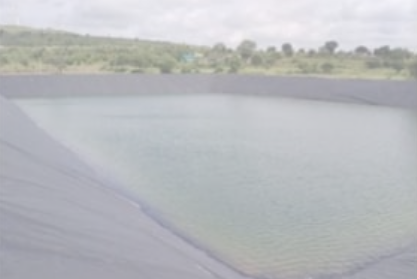The science of Technique of Sustainable Aquaculture: HDPE (High-Density Polyethylene) Fish Pond Liner
Within the world of fish cultivation and fishing industries, the basis of a successful fish farming venture is based on well-managed pond management. A vital component in this setup is the HDPE (High-Density Polyethylene) fish pond liner, a reliable and green choice for establishing and keeping fish ponds. Comprehending HDPE Fish Pond Liners HDPE fish pond liners are designed from High-Density Polyethylene, a synthetic thermoplastic material known for its remarkable longevity, resilience, and ability to withstand environmental factors. These liners are specifically created to establish a leak-proof seal within fish ponds, guaranteeing water conservation and avoiding leakage or infiltration.

Key Attributes of HDPE Fish Pond Liners Durability: HDPE fish pond liners are famous for their strength and ability to withstand severe environmental conditions, such as UV radiation, very high or low temperatures, and the inevitable degradation related to fish farming. Versatility: These sheets are extremely adaptable and can mold to the form and outlines of the pond, ensuring a tight and cozy fit. Chemical Resilience: HDPE liners are impervious to numerous chemicals, including those used in aquaculture for water purification and disease control, ensuring the durability of the liner. Low Maintenance: HDPE fish pond liners demand very little upkeep, enhancing cost-effectiveness and ease of pond management. Uses for HDPE Fish Pond Liners HDPE fish pond liners serve as the foundation for a wide range of aquaculture applications. Here are some common uses: Fish Farming: HDPE liners are crucial for establishing and covering fish ponds, ensuring water retention and stopping soil contamination. Prawn Cultivation: These liners are also used in shrimp farming to form and sustain ponds for shrimp cultivation. Breeding Facilities: In fish and shrimp hatcheries, HDPE liners are employed in tanks and channels for raising and breeding purposes. Fish Farming Research: Plastic pond liners are used in fish farming research facilities that require controlled settings to conduct scientific research. Benefits of Using High-Density Polyethylene Pond Liners Moisture Control: High-Density Polyethylene liners form a dependable shield to stop water leakage, maintaining steady water levels within fish tanks. This is crucial for the vitality and expansion of aquatic species. Longevity: These liners are designed to endure, withstanding the rigors of aquaculture operations and ecological influences over an extended lifespan. Biosecurity: HDPE liners help maintain a hygienic and regulated setting in fish ponds, reducing the risk of disease transmission and pollution. Eco-Friendliness: HDPE is an eco-friendly material that does not release toxic substances into the water, rendering it harmless to aquatic organisms and the adjacent habitat. In Conclusion Plastic fish pond liners serve a crucial function in the success of aquaculture and fish farming industries by delivering a robust, versatile, and green solution in pond maintenance. To read more about bat lot ho tom go to see our net page